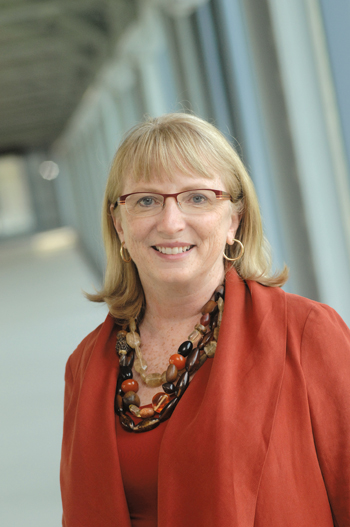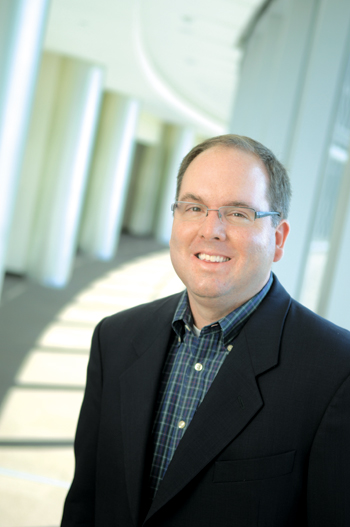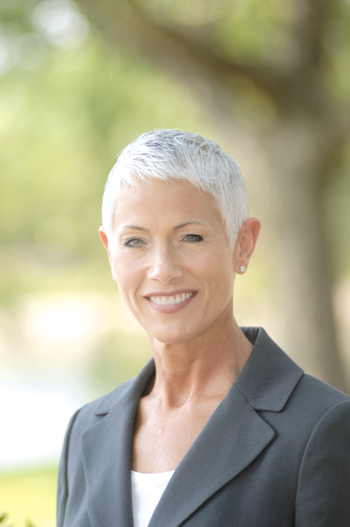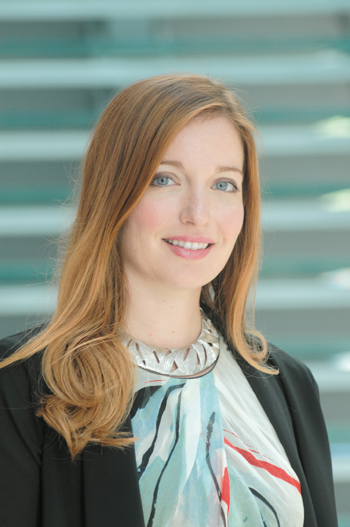Written by Colleen Bradford Krantz
Photos by Duane Tinkey
Charitable groups used to drop in at metro-area corporate headquarters, describe their work, and, if all went well, walk away with a check in hand.
Increasingly, however, corporations are sending such organizations down the hall to their foundation offices, where a more formal and complex process now guides donation decisions.
“Corporate foundations have gotten very sophisticated and very focused on what they want to do with their priorities,” says Connie Isaacson, owner of Isaacson Consulting in Des Moines, who has been involved in community development and fund-raising work for 25 years. “No longer can you just go to a corporation and say, ‘I have a good mission and a good focus, so would you donate?’ ”
Foundations affiliated with Central Iowa businesses are handing out some notable amounts. Eighteen corporate foundations based in Polk County gave out $12.4 million in 2010 (the latest statistics available at press time), according to data analysis by the Foundation Center, a worldwide philanthropic research and training institute based in New York.
Individuals, however, are the true powerhouses in the nonprofit world. In 2011, individuals—either directly or through bequests—gave 81 percent of the $298 billion in the nation’s philanthropic pot, according to Giving USA, an annual report compiled by Giving USA Foundation and The Center on Philanthropy at Indiana University. Corporate, family and community foundations chipped in about 14 percent of that, while additional corporate giving outside of foundations accounted for another 5 percent. Some corporate foundations move funds over from the parent company’s general budget every year, while others depend on interest earned by a fund built in the past.
The economic downturn in 2008 caused a drop in donations among all types of foundations. After being adjusted for inflation, however, the numbers show that giving from corporate foundations has leveled off in more recent years. “Corporate foundations have rebounded so much more quickly than has been true of community and private foundations,” Steven Lawrence, director of research at the Foundation Center, said in a phone interview from New York. “Despite the economic volatility, they … have put more resources into their foundations.”
For 2011, giving by corporate foundations reached $5.2 billion nationwide. Once adjusted for inflation, that represents an increase of just over 2 percent from the previous year. In 2010, giving had been flat compared with 2009, Lawrence says.
Though overall corporate giving increased last year, the economy remains volatile, and as some corporations lay off employees, questions may arise over why donations are still going out from a company that is cutting its work force.
“Certainly, during the depth of the economic crisis, we did hear some corporate philanthropy officers talking about the challenge of providing support while staff is being laid off,” Lawrence says. “But what was powerful was the leadership recognizing that, as corporate citizens, they needed to continue to provide support.”
What’s more, nonprofit corporate foundations are required under federal tax regulations to distribute at least 5 percent of the average fair market value of their assets each year, Isaacson notes.
By setting up their own foundations, companies are able to streamline funding and focus on key initiatives more carefully, says Suzanne Heckenlaible, a member of the Iowa Council of Foundations’ board of directors. Most corporations define what areas they are interested in supporting, such as education, health care or the arts. The creation of a foundation often also means having a designated person to work through grant applications.
This doesn’t mean, though, that all corporate donations go through foundations once they are established. Regulations governing corporate foundations prevent them from investing in a project that is seen as self-serving. As a result, the foundation may decline to contribute when its donation would provide a major promotional benefit, such as sponsoring a local event. Instead, the money is channeled through the company’s marketing department.
Iowa has more than 27,000 nonprofit organizations seeking a slice of the pie. “Sometimes there is a basic belief that we have to just walk out and find a grant and that will take care of any aspirations we might have,” says Frank Owens, a community development field specialist with Iowa State University’s Extension and Outreach who helps coordinate nonprofit management academies. “But there isn’t that big grant just sitting waiting at the end of the rainbow.”
Instead, those seeking grants must learn to navigate through the various steps of applying. But when the right grant reaches the right nonprofit, everyone benefits. “We might have the financial resources but not the staff to implement (those) ideas, (and) nonprofits have connections to issues but often lack (funding),” says Matt McGarvey, director of The Wellmark Foundation. “So when the two sides come together, wonderful and exciting things can happen in a community.”
A glance around Des Moines—Principal Riverwalk, the World Food Prize Hall of Laureates, the current revitalization of the Des Moines Botanical & Environmental Center—shows how corporations are willing to step forward for a big project. “Des Moines and Central Iowa are just incredibly generous,” Isaacson says. “Des Moines has such strong, fabulous philanthropic support and … (people give) from their hearts. It’s not a very large metropolitan area, but a very generous one.”
Below is a closer look at four Des Moines area corporate foundations.
 Principal Financial Group Foundation Inc.
Principal Financial Group Foundation Inc.
Prior to World War I, Gerard Nollen, a former president of the corporate predecessor of Principal Financial Group Inc., helped start the local Community Chest, which collected money from local businesses and workers to distribute to community projects. The organization, similar to others across the nation, was a forerunner of today’s United Way.
“This is a company that has a long tradition of being involved in the community,” says Mary O’Keefe, president of the Principal Financial Group Foundation Inc. “We don’t distinguish so much if the foundation is giving, as opposed to all our corporate giving. But we do use the foundation … to be able to plan our giving.”
Principal has given around $9 million annually in recent years, with about $5 million of that coming through the foundation. The remainder comes out of the company’s regular budgets. The annual contribution was closer to $13 million a half-dozen years ago when the company was supporting construction of the Principal Riverwalk along the Des Moines River. By the time the $70 million project is finished, Principal’s share will be about $20 million.
The Des Moines-based financial services giant likes to “improve the quality of life so more people will want to be part of the community,” O’Keefe says. “If the community does well, then the company has a better chance of thriving and having employees do well.”
The foundation invites grant applications from nonprofits located in Greater Des Moines, as well as from those in seven other communities where the company has a significant employee base (in Iowa, that includes Cedar Falls, Mason City and Ottumwa). The charity’s focus needs to fall under the categories of health and human services; education; arts and culture; or civic, community and environment.
Grants are often awarded to those with new ideas, but the foundation also likes to “be there for great organizations over time,” O’Keefe says. A project also stands out if it includes various private and public partners collaborating to achieve a common goal, such as the Gray’s Lake restoration and the John and Mary Pappajohn Sculpture Park.
Principal conducts an annual “environmental scan,” meaning the company takes a look at the Des Moines area to determine what new needs have arisen. In 2011, this scan drew attention to the high unemployment rate among veterans, and steps were taken to address the problem. For example, the foundation funded an educational campaign for employers focusing on veterans’ employment needs, concerns, and skills and qualifications.
Principal makes it clear to its employees that giving is part of its corporate culture, even during hard times, although it often scales back donations during recessionary periods. “We tell employees … that when we are in the most stressful economic times, the people who are the most fragile in our society are even more stressed,” O’Keefe says. “Our employees, for the most part, agree with that.”
 The Wellmark Foundation
The Wellmark Foundation
The Wellmark Foundation, which was established in 1991 and is affiliated with Wellmark Blue Cross and Blue Shield, has settled on the issue of childhood obesity as one of its key focus areas. Company leaders strive for corporate support to bring results in a few specific areas.
“Everyone wants to maximize what these resources can do,” says Matt McGarvey, the foundation’s director. So instead of supporting a variety of unrelated charitable causes, the foundation seeks “to use these funds to create more focus on issues, like childhood obesity,” he says. “You feel like you have some responsibility to raise that issue up and create awareness.”
In 2010, The Wellmark Foundation gave nearly $1.5 million in gifts and grants. Annual foundation donations have increased to roughly $1.8 million since then, which isn’t quite back to the 2007 level of almost $2 million, McGarvey says.
“(Since) the economic downturn in 2008 … we are just getting back to where we were,” he says. “Virtually all of our assets are invested … so it increases—and declines—with the economy.”
Like many other foundations, The Wellmark Foundation helps employees of its parent company broaden the impact of their own charitable contributions. The foundation allows employees to donate time to a nonprofit of their choice, and that time is treated as the equivalent of a donation to be matched. Last year, employees volunteered a total of 38,500 hours to nonprofits.
For its grants, the foundation uses a two-stage application process. All projects must focus on health improvement and general community health in Iowa or South Dakota, the two states where Wellmark has a large employee presence.
McGarvey says separate corporate sponsorships come directly from Wellmark Inc. But “those are on a much more limited budget and scale than the foundation, which serves as the primary philanthropic vehicle for community support,” he says.
Like other companies, Wellmark believes it’s important to keep giving even when economic downturns result in cutbacks within the company. “No matter how difficult the economic times,” McGarvey says, “you want to be seen as an economic contributor.”
 Pioneer Hi-Bred Foundation
Pioneer Hi-Bred Foundation
DuPont Pioneer is another company with a long history of giving. “Much of Johnston, the city, was formed on landed ceded by Pioneer,” says Michelle Gowdy, president of Pioneer Hi-Bred Foundation. “They were very philanthropic and generally very quiet about it in those days.”
In 1992, when Tom Urban was serving as Pioneer’s president, the company decided to establish a foundation to allow some at the company to focus on charitable giving rather than fitting those duties in with day-to-day business.
“In the early years, (the foundation) was used primarily to support philanthropy in Des Moines and Iowa and, in more recent years—maybe the last 10 years—it was predominantly international grant giving. We are in 90-plus countries today,” says Gowdy, who also serves as Pioneer’s director of community and academic relations. The foundation has, however, been working in the last year and a half to increase giving both in the United States and internationally, she says.
The foundation has typically given $2 million to $3 million a year, but, counting charitable causes supported by the corporate side of Pioneer, total giving usually nears $6 million. (In the past few years, the foundation’s donations declined as it implemented a new computer system to handle the grant process. Grants totaled about $686,000 in 2010, according to the foundation’s informational filing with the Internal Revenue Service. Gowdy says the foundation will grant about $2.5 million in 2012 with an increase planned for 2013.)
The foundation focuses on science education, particularly in agronomy, worldwide, and also backs projects designed to improve food security and agricultural sustainability worldwide. Community betterment is the third area the foundation supports. Applicants are asked to go through an initial application step, after which they may be invited to complete a second step if their goals are believed to align with those of the foundation.
“Pioneer is committed to improving food safety through innovation, so it is no surprise that the foundation echoes this philosophy,” Gowdy says.
Outside of the foundation, Pioneer has supported various community projects as well as local arts organizations, investing in, for example, The Long Look Garden downtown and the World Food Prize Hall of Laureates. The company also recently donated $600,000 to the Des Moines Symphony’s current $7.5 million capital endowment campaign.
DuPont also has a philanthropic presence in Des Moines; in 2011 Pioneer’s parent company pledged $3 million to the $11.6 million campaign to transform the Des Moines Botanical & Environmental Center into the Greater Des Moines Botanical Garden.
 Kum & Go Charitable Fund
Kum & Go Charitable Fund
Kum & Go donates 10 percent of its profits to charitable and educational causes each year. Rather than having its own private foundation, the company in 1999 established a charitable fund at the Community Foundation of Greater Des Moines.
The convenience store chain still decides where to allocate the funds, though, says Liz Lidgett, the company’s manager of art and philanthropy. The company looks, in particular, for projects that focus on youths or education, causes Kyle Krause, president and CEO of Kum & Go, and his wife, Sharon, embrace.
“Education is something that has always been incredibly important to the Krauses,” Lidgett says. “We definitely have been focused on youth and education for the past 10 years.” The company has, for example, funded programs and initiatives at local high schools and Iowa colleges and universities.
The West Des Moines-based company owns 431 stores in 11 states, and it funds projects in communities where it operates. Kum & Go declines to reveal how much it donates to charitable causes each year, although Lidgett says several recent projects the company has supported include $165,000 for Toys for Tots, $220,000 to United Way of Central Iowa and $115,000 for the American Red Cross’ tornado recovery efforts in Joplin, Mo.
“We do look at everything on a case-by-case basis,” Lidgett says. “I think we are formalizing the process more and more as we go.”
Kum & Go decided to establish a fund at the Community Foundation instead of create its own because the foundation provides administrative and management support, which saves on back-office costs for the company and is ultimately more efficient, company leaders say. Kyle Krause also serves on the board of the Community Foundation, and he and Sharon are members of the foundation’s Leadership Circle, an elite group of donors who pledge $2 million to the foundation through initial contributions and deferred gifts. The Krauses are involved in other charitable groups in the area as well.






